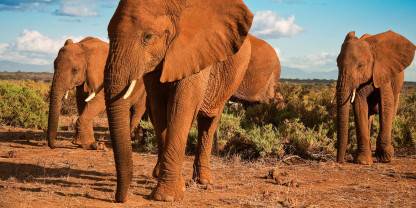Shaba, Samburu and Buffalo Springs National Reserves have together recorded more than 390 bird species. The dry, open country offers very rewarding birding opportunities. The area holds a number of northeast African dry-country species that are also found in Ethiopia and Somalia, and if bird watching is your main interest, Shaba is a great choice. The reserve has very little tourist traffic compared to Buffalo Springs and Samburu, which have higher mammal densities.
Birding Specials Treats for Avid Birders
- Acacia tit
- African palm swift
- Ashy cisticola
- Bare-eyed thrush
- Black-bellied sunbird
- Black-capped social weaver
- Brown-tailed rock chat
- Chestnut weaver
- Chestnut-headed sparrow lark
- Donaldson Smith’s sparrow-weaver
- Fischer’s starling
- Golden pipit
- Golden-breasted starling
- Greater kestrel
- Grey wren-warbler
- Hunter’s sunbird
- Lanner falcon
- Mariqua sunbird
- Martial eagle
- Northern brownbul
- Palm-nut vulture
- Pink-breasted lark
- Pygmy batis
- Red-bellied parrot
- Red-necked falcon
- Red-winged lark
- Reichenow’s seedeater
- Rosy-patched bush-shrike
- Secretary bird
- Singing bush lark
- Somali bee-eater
- Somali ostrich
- Spotted palm-thrush
- Von der Decken’s hornbill
- Vulturine guineafowl
- White-headed mousebird
- Yellow-vented eremomela
Best Time for Bird Watching
Shaba is a bird-watcher’s paradise throughout the year. Unusual dry-country specials are often and can be spotted at any time. swoop in from November to April. If you’re planning a birding trip, keep in mind that November and April are the peak periods for rainfall. You may prefer to visit from December to February or March.

